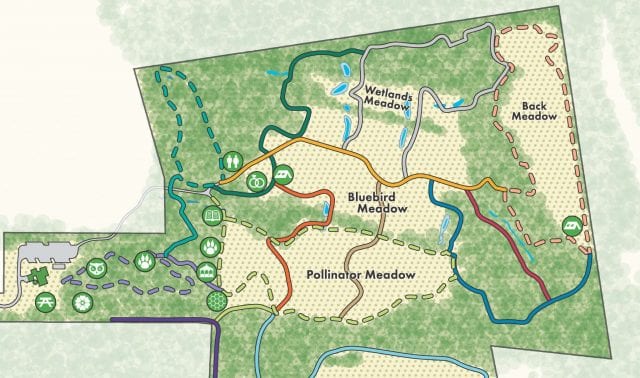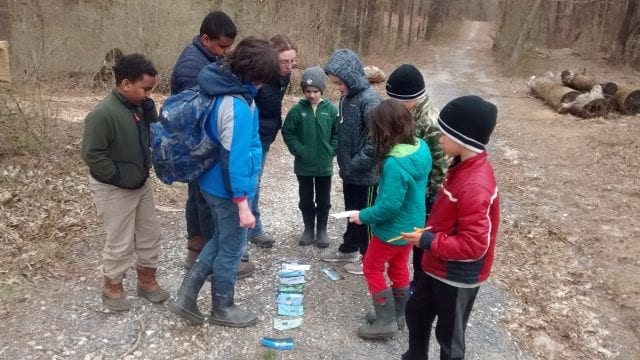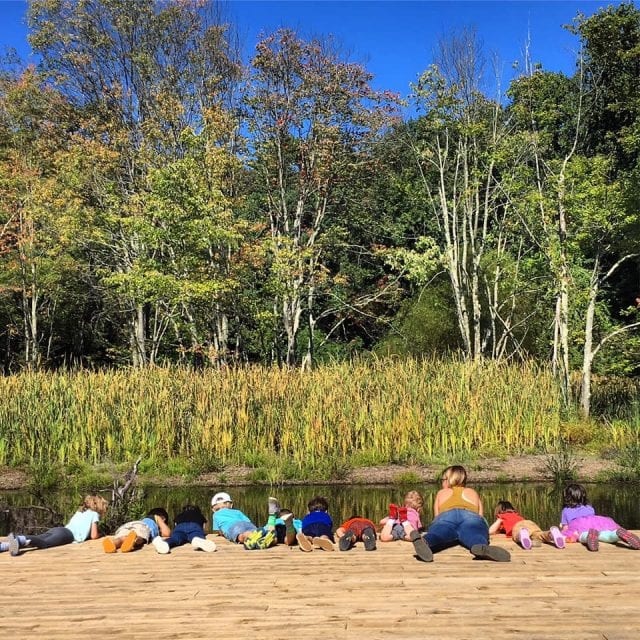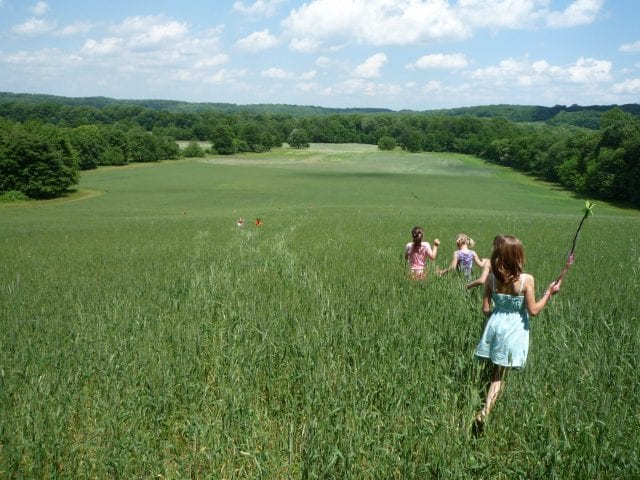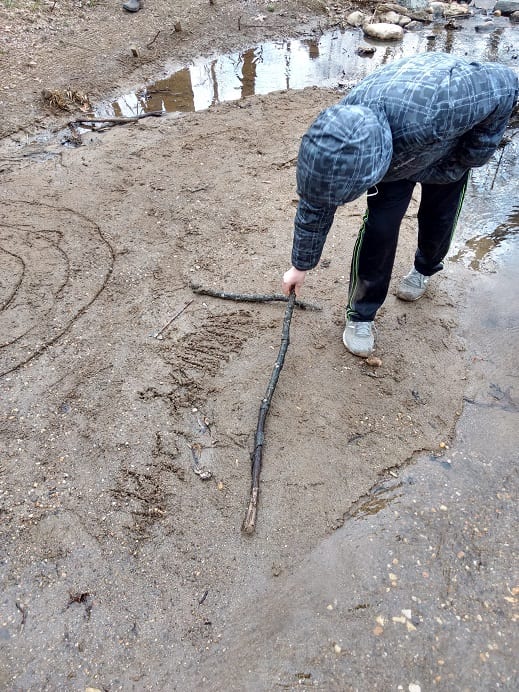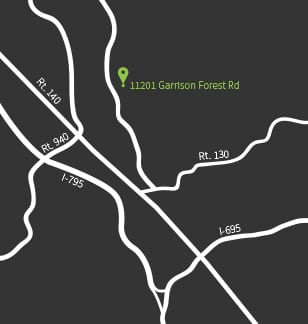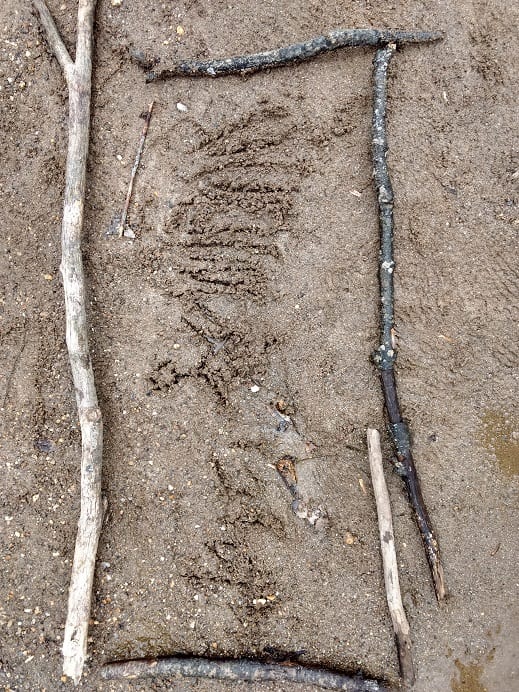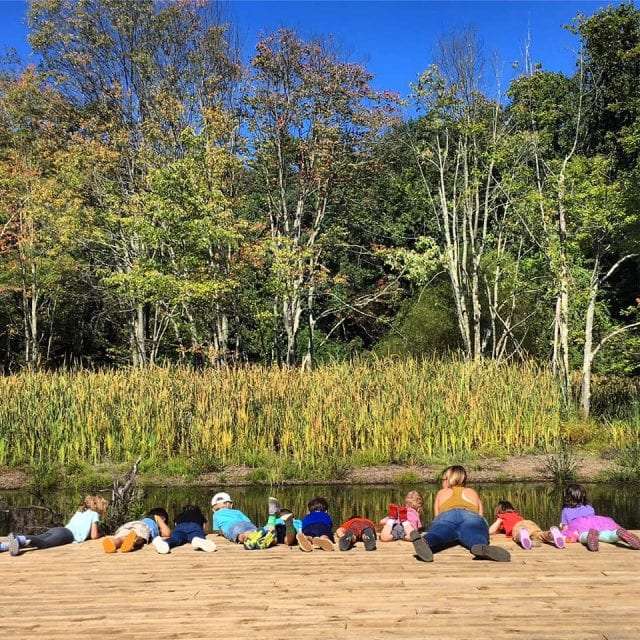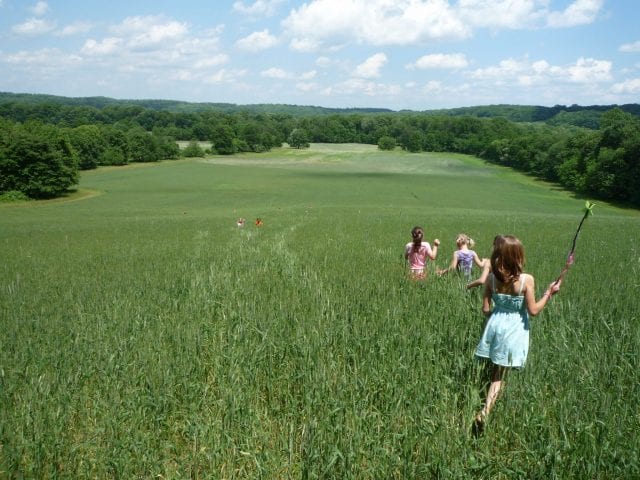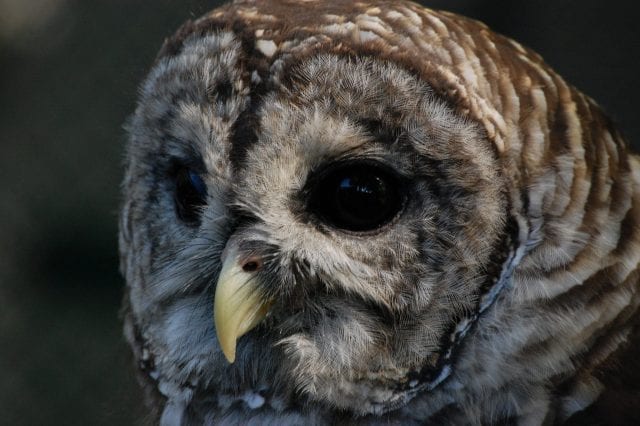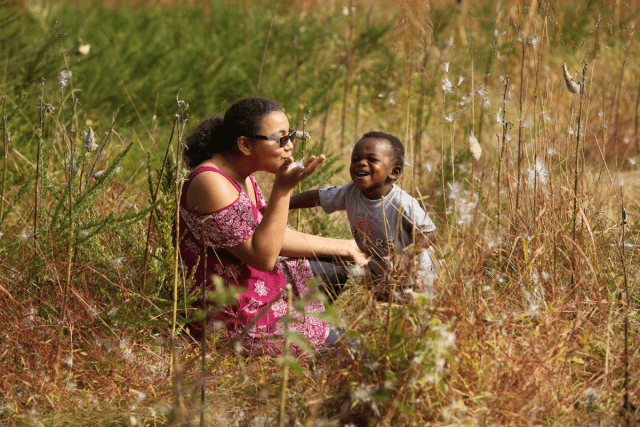4/2/2019
Over the last few weeks we have been learning about land artist Michael Grab who uses rocks to make amazing, gravity defying structures. Today we transitioned to a new artist, Richard Shilling, but before we talked about his art, we started our class with an Earth timeline. Since rocks are as old as the Earth itself we decided to look and see how old everything else is on Earth.
The following are the events we focused on for our timeline: formation of oceans, first cyanobacteria, the first eukaryotes (multi-cellular organism), the first invertebrate (which happens to be a sponge), when fishes first arrived, fungi, land plants, amphibians, insects, reptiles, when did the dinosaurs occupy earth, the first birds and finally mammals. Our first task was to set all of these in order from the first thing on Earth to the last (most recent). Everyone worked together to order the events and we only got two wrong! After we corrected the order we set out a tape measure to put the events to scale. Starting at the end of the tape measure with the highest number we placed our first event, the first oceans (of the events we were looking at, some like flowering plants were left out). We then placed cyanobacteria but then we noticed that the next event, eukaryotes took a long time, billions of years, so the gap on the tape measure is long (see our image below). After that the events were rather clumped up and most of them occurred within the last 500 million years. We really enjoyed working together to create this Earth timeline.
After snack at the gazebo and sharing events from the weekend, we hiked down the meadow and started on the Vernal Pond trail. This trail hikes you through some of the forested vernal wetlands of Irvine, full of frogs and skunk cabbage (and mosquitoes in the summer!). Since it is April we were mosquito free and as we hiked along we rolled over some logs in a few drier spots and found red-backed salamanders! There are two variants of the red-backed salamander, a silvery gray color and a gray color with a red back. We found the silvery gray variant. Here is some more information on this native salamander species:
https://nationalzoo.si.edu/animals/eastern-red-backed-salamander
We returned the salamanders to their wet, dark hiding places and made our way to the forested ponds and stream. Here we introduced our new land artist, Richard Shilling. He is known for his work in ephermal land art, land art that is made only with natural materials that can easily return to nature. Through his work he tries to deepen his connection to the land and nature and preserve his works of art through photography. We emulated Richard Shilling at the ponds by creating our own ephermal land art made out of natural materials that we could find at the site. Check out our creations below! And to learn more about Richard Shilling you can visit his website here:
https://www.richardshilling.co.uk/bio.html
We also preserved our nature art with photography and played with color in our journals by adding colored cellophane over our images to see how they transformed. Because Richard Shilling commonly wrote about his pieces and titled them, we also gave our art a name and wrote a story about it. Some other nature finds we found at the ponds were raccoon, squirrel and fox prints and crayfish holes. Lastly, Gavin brought back a water sample to Irvine and we tested the pH of the water using a test kit. The results were a normal pH for freshwater. pH numbers are important because they tell you whether the water is too acidic or too basic and water that varies too much from normal can be detrimental to aquatic animals. We plan to do more water testing after we return from Spring break so stay tuned!
4/9/2019
Today we celebrated the half way point of our semester with a campfire, snacks and s’mores and a fun nature inspired clue game. Before enjoying all these goodies and games with our classmates, friends and families, we explored the ponds of the Wetlands Meadow. These ponds were added to Irvine’s landscape as part of a much larger restoration project. Since then a variety of animals have been seen using them, from great blue herons and ducks, to frogs, toads and fish, to a large number of insect species.
One of the ponds we explored was home to hundreds of tadpoles, millions of eggs and american toads. These toads live most of their lives in the forest only traveling to shallow ponds like these to breed. This event only takes place for a couple days in Spring so it is easy to miss! We found these toads calling for mates, inflating their throat pouches, and laying lots of stringy eggs. Here is a great little resource about this charismatic toad:
http://herpsofnc.org/american-toad/
If you visit Irvine you can see a couple of these toads close up in one of our enclosures in the Exhibit Hall. We talked about how to safely move through the ponds, walking extremely slowly, using our eyes to make sure we aren’t stepping on any toads or eggs, and how to properly handle toads. Also, we reviewed some of the differences between frog and toad eggs (toads lay their eggs in strings, frogs in clumps) and how most frogs and toads live on land, only returning to water to lay their eggs. And how many eggs can a toad lay? We made guesses and everyone was stunned at the answer, roughly 8,000 per female!
After exploring the pond we hiked back to the barn and enjoyed a campfire with our families and classmates!
